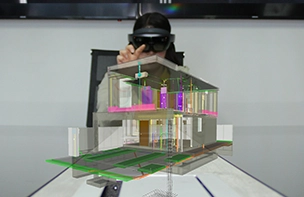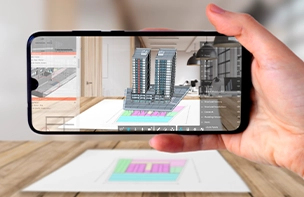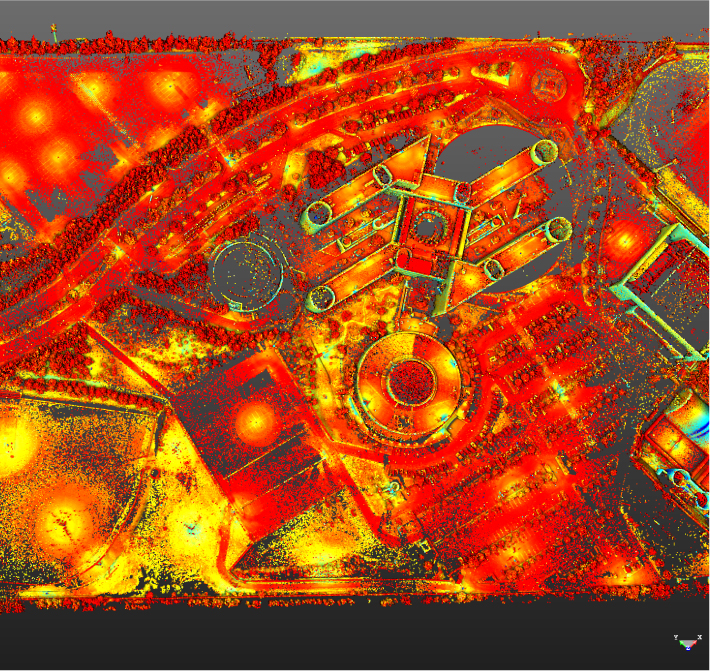
The incorporation of Augmented Reality (AR) in the construction industry is not only changing the way professionals interact with designs and projects but also generating significant improvements in terms of efficiency and safety. The ability to overlay highly detailed digital models onto the physical environment provides construction teams with the capability to monitor the project’s progress in real-time. This facilitates the early detection of potential deviations from the original design and enables more informed decision-making to address issues before they become costly obstacles.
In the realm of safety, Augmented Reality also plays a crucial role. Workers can access contextual information directly in their field of vision, including safety warnings, operational instructions, and locations of hazardous equipment. This ability to receive relevant information without the need to look away from the task they are performing reduces the risk of accidents and human errors.
Furthermore, AR can simulate safety situations in real-time, allowing workers to practice procedures in a virtual environment before implementing them in reality. In summary, Augmented Reality is transforming the construction industry by offering a completely new visual and hands-on experience.
Augmented Reality is used to visualize architectural designs in real environments, allowing professionals and clients to explore how buildings will look in their final context.
In the field of structure inspection and maintenance, AR helps technicians identify issues and carry out repair tasks more efficiently.
Real estate agents use AR to virtually showcase properties to potential buyers, streamlining the sales process and providing an interactive experience.
Engineers use Augmented Reality to analyze and optimize the planning and execution of infrastructure projects, such as roads, bridges, and transportation systems.
Augmented Reality is used in the training of construction workers and students to simulate real-life situations and practice construction techniques safely.
Augmented Reality is used in the presentation of construction projects to investors and stakeholders, offering a more immersive and appealing view of future buildings.
Augmented Reality allows for 3D models to be visualized overlaid on the real environment, making it easier for professionals to understand and communicate design concepts more effectively.
Professionals can analyze virtual models and plan the project development with greater precision, identifying potential conflicts and optimizing logistics.
The ability to overlay virtual models onto the physical environment allows for the identification of deviations and design issues before construction begins, reducing costly errors in later stages.
Augmented Reality is used for training construction workers in construction procedures and safety, improving efficiency and reducing risks on the job site.
It enhances project presentation to potential investors, as they can visualize the project more realistically.
Augmented Reality allows showing clients and stakeholders how the finished project will look, making decision-making easier and promoting greater investment.
In conclusion, Augmented Reality has emerged as a fundamental catalyst in the construction industry, redefining how professionals interact with projects and significantly improving efficiency and safety. The ability to overlay digital models onto the real environment provides construction teams with precise tools for visualizing, planning, and executing projects more effectively. Furthermore, Augmented Reality is revolutionizing the training and development of workers, promoting collaboration among teams, and optimizing project management at all stages. With its potential still growing, it is evident that Augmented Reality will continue to drive significant advancements in the construction industry, paving the way for a more efficient, safe, and visionary construction process.


The incorporation of Augmented Reality (AR) in the construction industry is not only changing the way professionals interact with designs and projects but also generating significant improvements in terms of efficiency and safety. The ability to overlay highly detailed digital models onto the physical environment provides construction teams with the capability to monitor the project’s progress in real-time. This facilitates the early detection of potential deviations from the original design and enables more informed decision-making to address issues before they become costly obstacles.

In the realm of safety, Augmented Reality also plays a crucial role. Workers can access contextual information directly in their field of vision, including safety warnings, operational instructions, and locations of hazardous equipment. This ability to receive relevant information without the need to look away from the task they are performing reduces the risk of accidents and human errors.
Furthermore, AR can simulate safety situations in real-time, allowing workers to practice procedures in a virtual environment before implementing them in reality. In summary, Augmented Reality is transforming the construction industry by offering a completely new visual and hands-on experience.
Augmented Reality is used to visualize architectural designs in real environments, allowing professionals and clients to explore how buildings will look in their final context.
In the field of structure inspection and maintenance, AR helps technicians identify issues and carry out repair tasks more efficiently.
Real estate agents use AR to virtually showcase properties to potential buyers, streamlining the sales process and providing an interactive experience.
Engineers use Augmented Reality to analyze and optimize the planning and execution of infrastructure projects, such as roads, bridges, and transportation systems.
Augmented Reality is used in the training of construction workers and students to simulate real-life situations and practice construction techniques safely.
Augmented Reality is used in the presentation of construction projects to investors and stakeholders, offering a more immersive and appealing view of future buildings.

Augmented Reality allows for 3D models to be visualized overlaid on the real environment, making it easier for professionals to understand and communicate design concepts more effectively.
Professionals can analyze virtual models and plan the project development with greater precision, identifying potential conflicts and optimizing logistics.
The ability to overlay virtual models onto the physical environment allows for the identification of deviations and design issues before construction begins, reducing costly errors in later stages.
Augmented Reality is used for training construction workers in construction procedures and safety, improving efficiency and reducing risks on the job site.
It enhances project presentation to potential investors, as they can visualize the project more realistically.
Augmented Reality allows showing clients and stakeholders how the finished project will look, making decision-making easier and promoting greater investment.
En conclusión, la Realidad Aumentada ha emergido como un catalizador fundamental en la industria de la construcción, redefiniendo la manera en que los profesionales interactúan con los proyectos y mejorando de manera significativa la eficiencia y la seguridad. La capacidad de sobreponer modelos digitales en el entorno real ofrece a los equipos de construcción herramientas precisas para visualizar, planificar y ejecutar proyectos de manera más efectiva. Además, la Realidad Aumentada revoluciona la formación y el entrenamiento de los trabajadores, promueve la colaboración entre equipos y optimiza la gestión de proyectos en todas sus etapas. Con su potencial aún en crecimiento, es evidente que la Realidad Aumentada seguirá impulsando avances notables en la industria de la construcción, allanando el camino hacia una construcción más eficiente, segura y visionaria.

